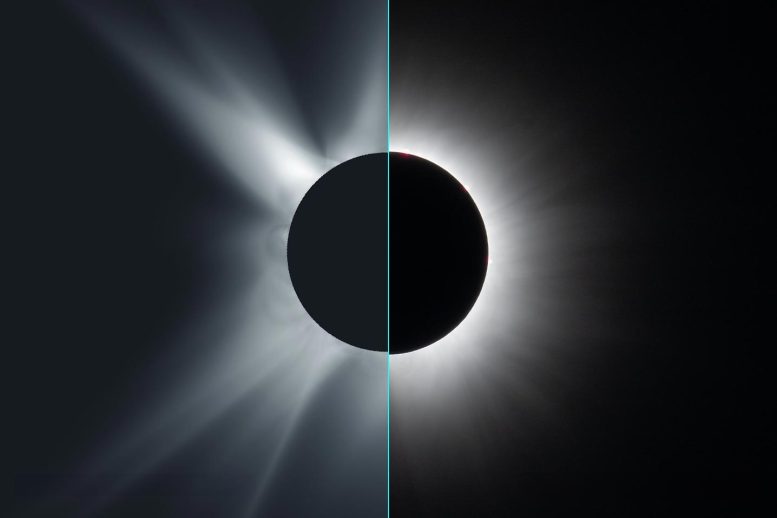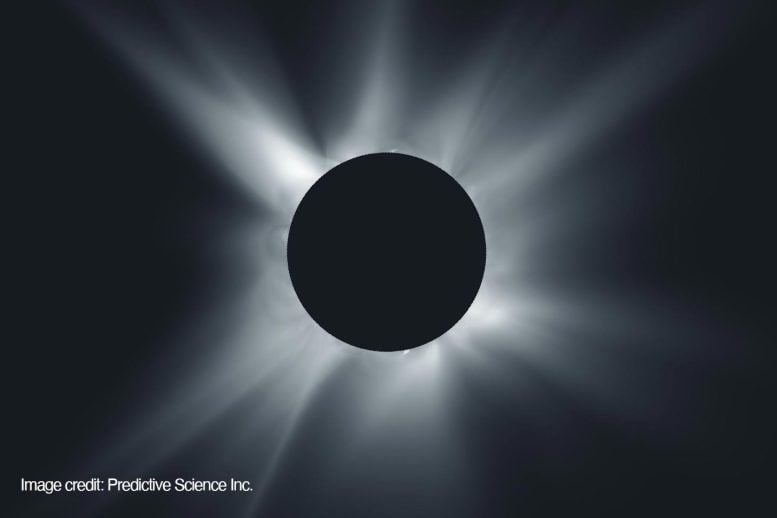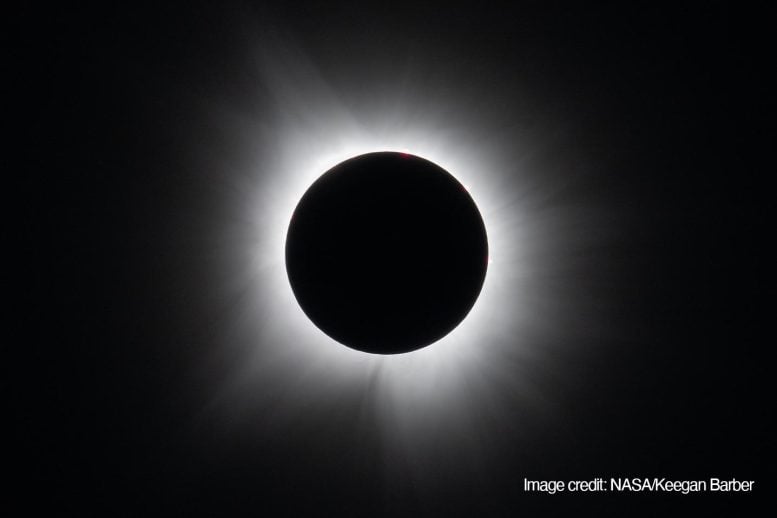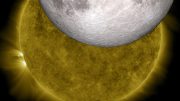
Scientists at Predictive Science Inc. aimed to predict the appearance of the solar corona during the total solar eclipse on April 8, 2024, using data from supercomputers and space observatories. Credit: Predictive Science Inc., NASA/KeeganBarber
Predictive Science Inc. utilized supercomputers and satellite data to model the solar corona during a 2024 eclipse, improving understanding of solar disruptions.
Before a total solar eclipse crossed North America on April 8, 2024, scientists at Predictive Science Inc. of San Diego aimed to predict what the Sun’s outer atmosphere, the corona, would look like during totality.
The predictions help researchers understand the accuracy of their models of the Sun’s corona, which extends along its magnetic field. A solar eclipse offers a rare opportunity to view the entire corona from Earth, guiding research into how its energy can cause solar flares and coronal mass ejections, which can disrupt technology on Earth and in space.
The researchers used the Aitken, Electra, and Pleiades supercomputers at the NASA Advanced Supercomputing facility, located at the agency’s Ames Research Center in California’s Silicon Valley. With near-real-time data from NASA’s Solar Dynamics Observatory and ESA’s (the European Space Agency) and NASA’s Solar Orbiter, they created a dynamic model of the corona.
The team’s model accurately predicted several details, including long streamers in the upper and lower left side of the image, but the streamers’ locations are slightly misaligned when compared with real images. This is likely because some new activity on the far side of the Sun, which affected the appearance of the corona, wasn’t yet seen and couldn’t be incorporated in the model. Once it was, the model more closely matched observational photos of the corona.
Recognizing that the corona is inherently complex and difficult to predict during solar maximum, Cooper Downs, a research scientist at Predictive Science, said, “We’re really thrilled with this simulation. It really has a lot of scientific consequences that I think we’ll be exploring for a long time.”











Taxpayers’ money at work, everyone.